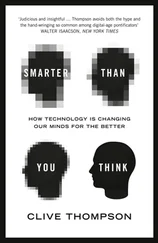1 Cover
2 Table of Contents
3 Begin Reading
1 v
2 iii
3 iv
4 ix
5 x
6 xi
7 xii
8 xiii
9 xiv
10 xv
11 xvi
12 xvii
13 xviii
14 xix
15 xx
16 xxi
17 xxii
18 1
19 2
20 3
21 4
22 5
23 6
24 7
25 8
26 9
27 10
28 11
29 12
30 13
31 14
32 15
33 16
34 17
35 18
36 19
37 20
38 21
39 22
40 23
41 24
42 25
43 26
44 27
45 28
46 29
47 30
48 31
49 32
50 33
51 34
52 35
53 36
54 37
55 38
56 39
57 40
58 41
59 43
60 44
61 45
62 46
63 47
64 48
65 49
66 50
67 51
68 52
69 53
70 54
71 55
72 56
73 57
74 58
75 59
76 60
77 61
78 62
79 63
80 64
81 65
82 66
83 67
84 68
85 69
86 70
87 71
88 72
89 73
90 74
91 75
92 76
93 77
94 78
95 79
96 80
97 81
98 82
99 83
100 84
101 85
102 86
103 87
104 88
105 89
106 90
107 91
108 92
109 93
110 94
111 95
112 96
113 97
114 98
115 99
116 100
117 101
118 102
119 103
120 104
121 105
122 106
123 107
124 108
125 109
126 110
127 111
128 112
129 113
130 114
131 115
132 116
133 117
134 118
135 119
136 120
137 121
138 122
139 123
140 124
141 125
142 126
143 127
144 128
145 129
146 130
147 131
148 132
149 133
150 135
151 136
152 137
153 138
154 139
155 140
156 141
157 142
158 143
159 144
160 145
161 146
162 147
163 148
164 149
165 150
166 151
167 152
168 153
169 154
170 155
171 156
172 157
173 158
174 159
175 160
176 161
177 162
178 163
179 164
180 165
181 166
182 167
183 168
184 169
185 170
186 171
187 172
188 173
189 174
190 175
191 176
192 177
193 178
194 179
195 180
196 181
197 182
198 183
199 184
200 185
201 186
202 187
203 188
204 189
205 190
206 191
207 192
208 193
209 194
210 195
211 196
212 197
213 198
214 199
215 200
216 201
217 202
218 203
219 204
220 205
221 206
222 207
223 208
224 209
225 210
226 211
227 212
228 213
229 214
230 215
231 216
232 217
233 218
234 219
235 220
236 221
237 222
238 223
239 224
240 225
241 226
242 227
243 228
244 229
245 230
246 231
247 232
248 233
Technological Changes and Human Resources Set
coordinated by
Patrick Gilbert
Volume 1
Clotilde Coron
Patrick Gilbert

First published 2020 in Great Britain and the United States by ISTE Ltd and John Wiley & Sons, Inc.
Apart from any fair dealing for the purposes of research or private study, or criticism or review, as permitted under the Copyright, Designs and Patents Act 1988, this publication may only be reproduced, stored or transmitted, in any form or by any means, with the prior permission in writing of the publishers, or in the case of reprographic reproduction in accordance with the terms and licenses issued by the CLA. Enquiries concerning reproduction outside these terms should be sent to the publishers at the undermentioned address:
ISTE Ltd
27-37 St George’s Road
London SW19 4EU
UK
www.iste.co.uk
John Wiley & Sons, Inc.
111 River Street
Hoboken, NJ 07030
USA
www.wiley.com
© ISTE Ltd 2020
The rights of Clotilde Coron and Patrick Gilbert to be identified as the authors of this work have been asserted by them in accordance with the Copyright, Designs and Patents Act 1988.
Library of Congress Control Number: 2020930221
British Library Cataloguing-in-Publication Data
A CIP record for this book is available from the British Library
ISBN 978-1-78630-437-7
For a long time, technological change was considered synonymous with economic and social progress. Today, it stimulates some and worries others. To take just one example, the most emblematic, the massive arrival of new digital tools is disrupting consumption patterns, forms of employment and working conditions, and posing many challenges for organizations and individuals alike. While it is recognized that technological change is a key determinant of economic growth, it is also true that it can also amplify or even catalyze inequalities (by age, gender, level of education and skills, income, etc.). In short, technological change is also a social change with which it maintains complex interactions: technology is as much the source, ambivalent, as the consequence of social transformations. In particular, individuals are both human resources of technological transformations and receivers, more or less capable and accepting of its effects.
The phenomenon we are about to discuss has a long history. However, there is still some uncertainty about the meaning of the terms used to describe it, so it is useful to start with a few definitions.
I.1.1. Technical, technological and technical objects
There is some confusion between the technical and technological, probably because of the respective connotations of these terms in everyday language. Today, the term “technological” tends to be used as a superlative of “technical” for which it is sometimes substituted. More pretentiously, it has come to refer to a modern and complex technique, such as information and communication processing techniques. While the term “technical” refers to well-demarcated know-how and the traditional industrial universe, the term “technological” is spontaneously associated with modern values. Resisting the current tendency to make the terms somewhat synonyms, we will follow the tradition introduced by sociologist and anthropologist Marcel Mauss (1872–1950), and extended in the anthropology of techniques, notably by Leroi-Gourhan (1911–1986), André-Georges Haudricourt (1911–1996), and others, by designating the technical the “effective traditional act”.
Let us take up the three elements of Mauss’ formula: the act, tradition and efficiency. First of all, a technology is not defined by a collection of objects, but by the concrete action it exerts on the world. It must be effective because, without sensitive effects and known as such, an act cannot be designated as such. Moreover, this act is described as traditional. For if it is not linked to a tradition, an act is neither intelligible nor reproducible, and cannot be transmitted to others.
Technologies are also based on invention and innovation, but they are not themselves totally independent of the knowledge and know-how accumulated in a given culture. Specifically, technology refers to all the processes and methods used in the production activities of an object or service. It is a real need for scientists, engineers and industrialists. But, undoubtedly precisely because of the diversity of these needs, it can hardly lead to a representation that is unanimously accepted.
Читать дальше













